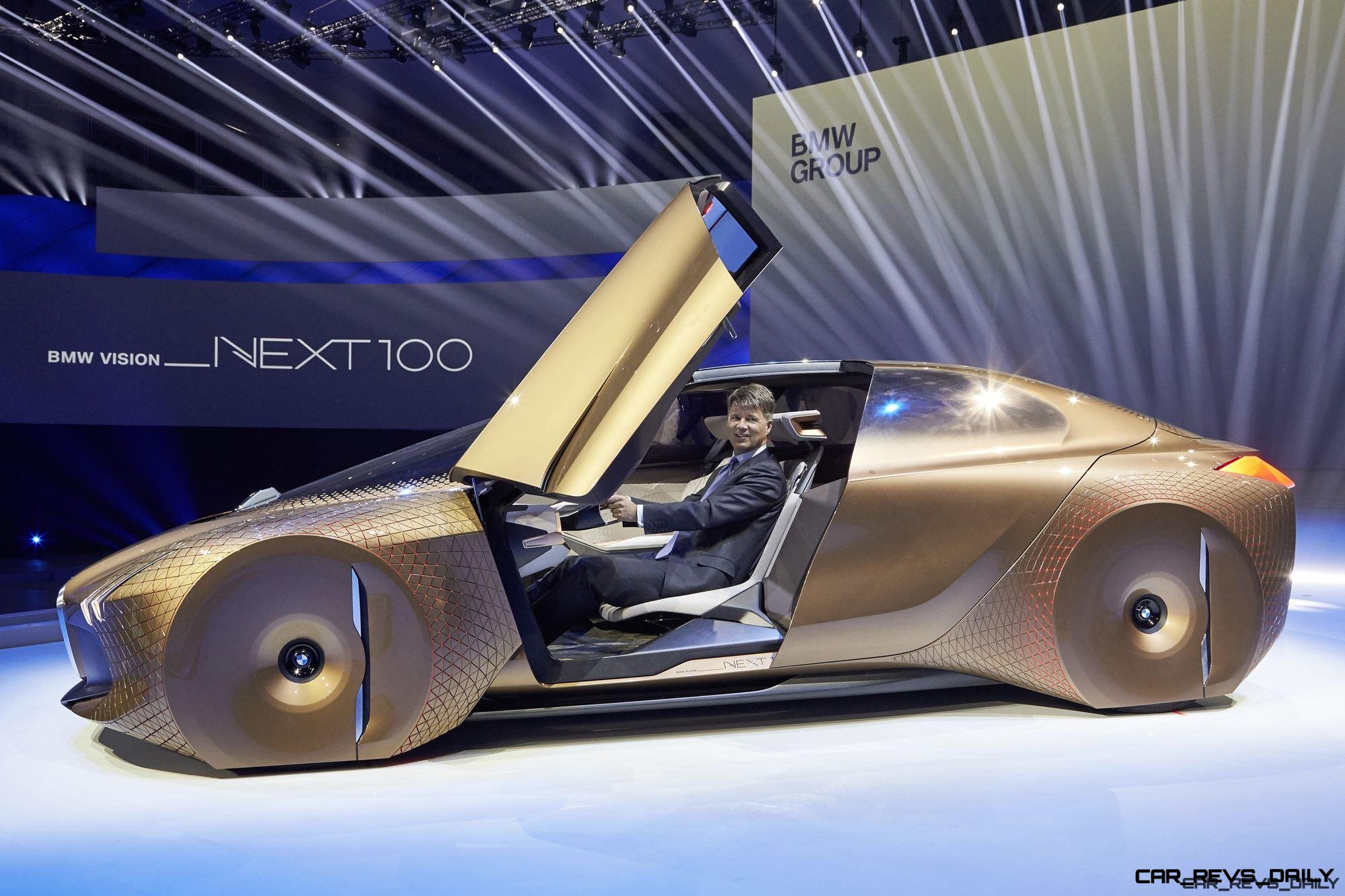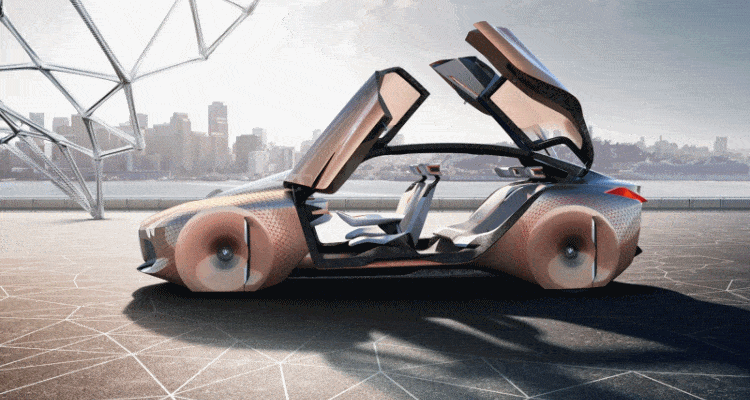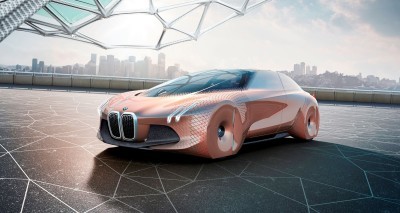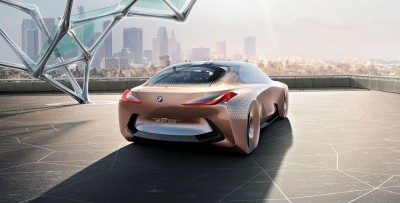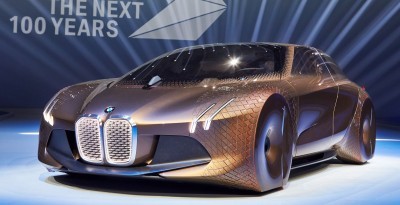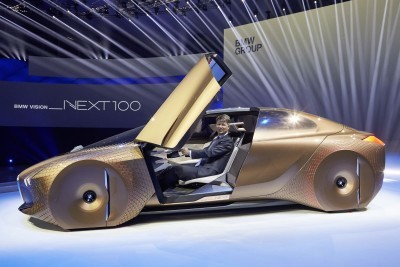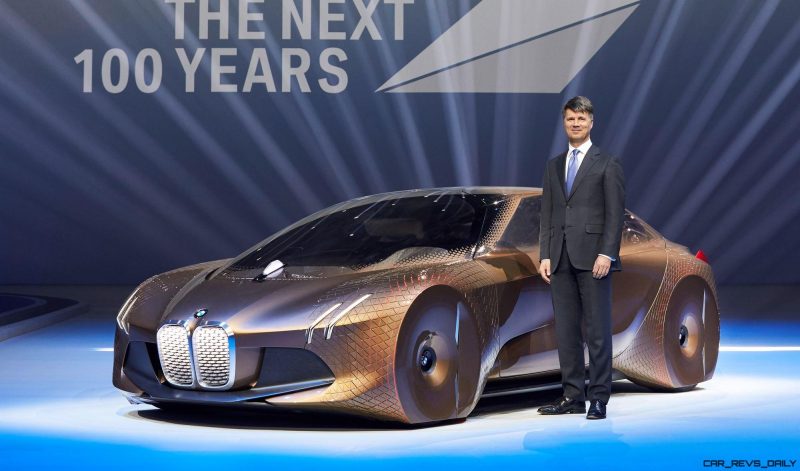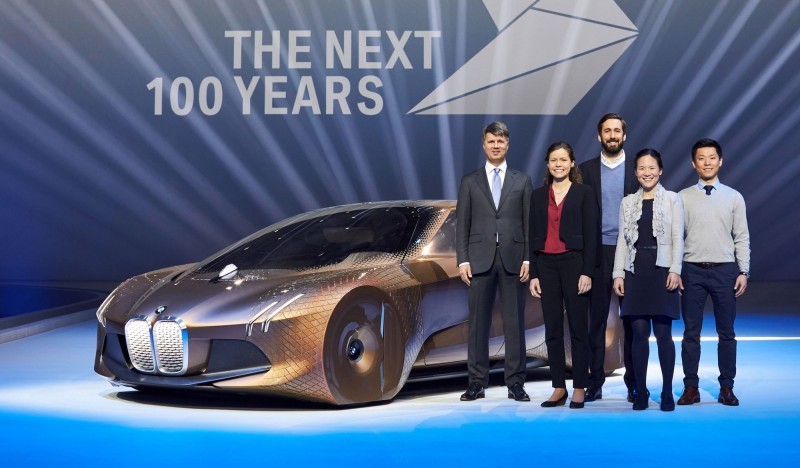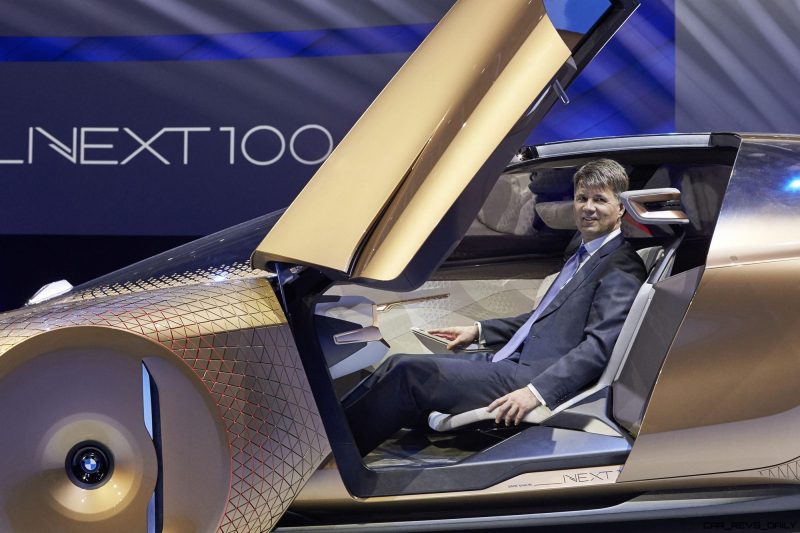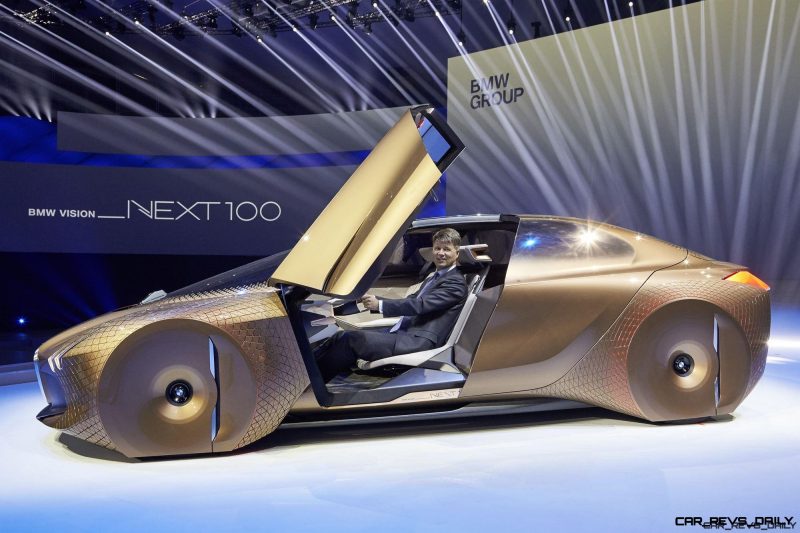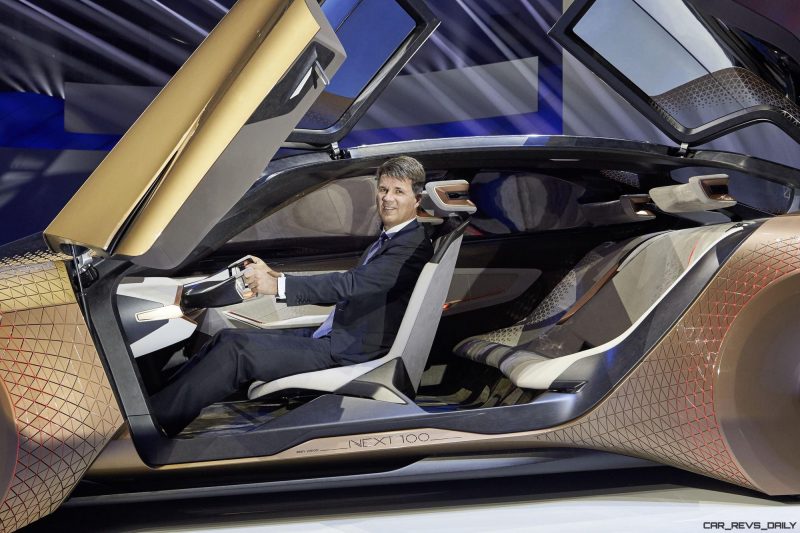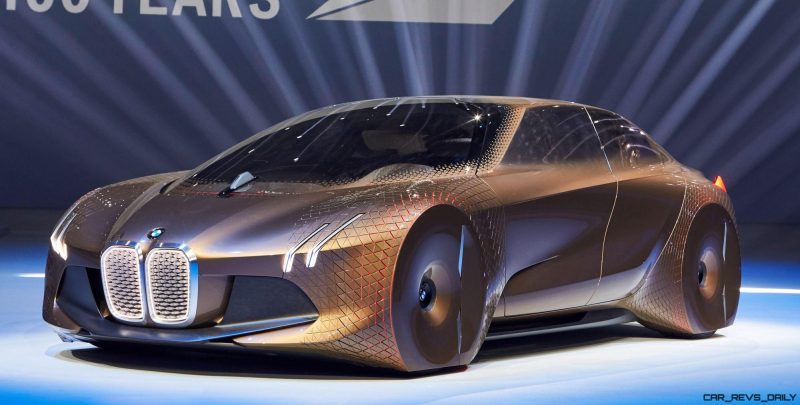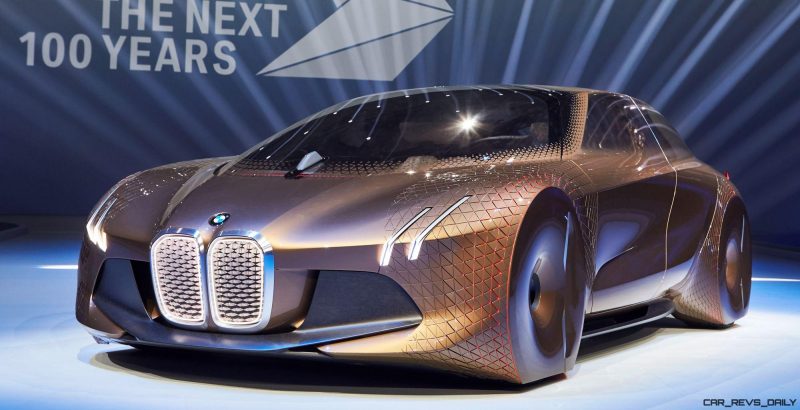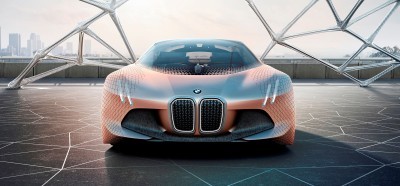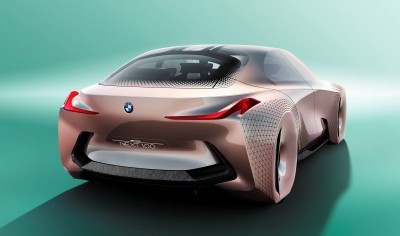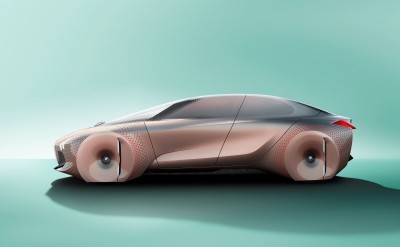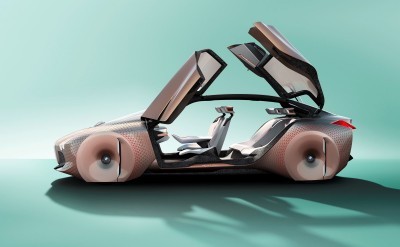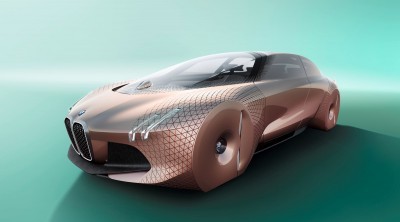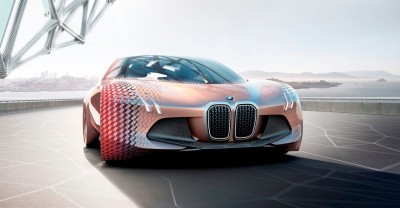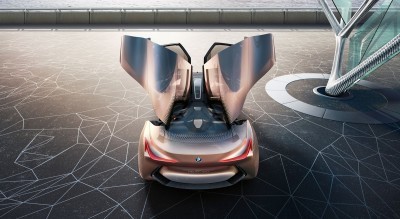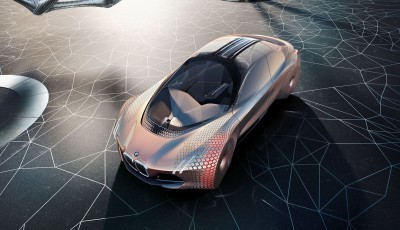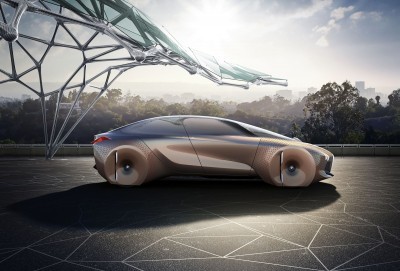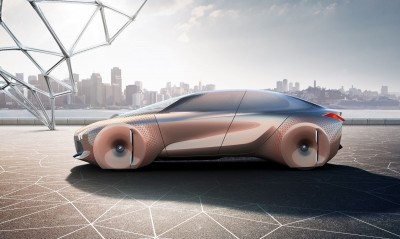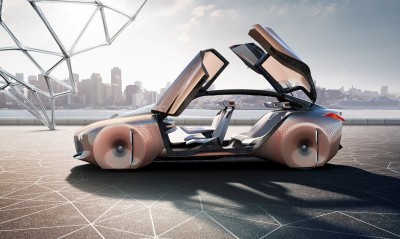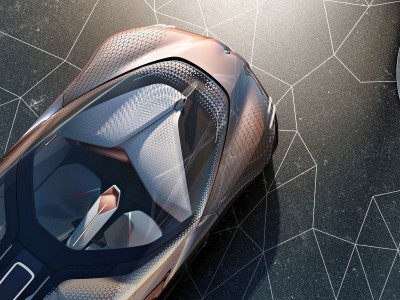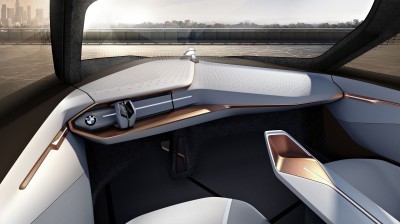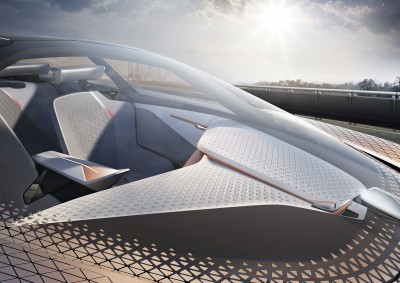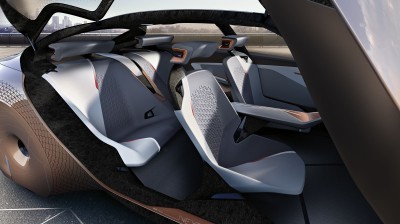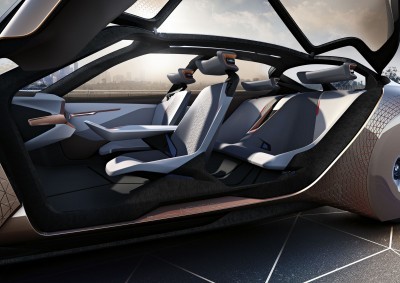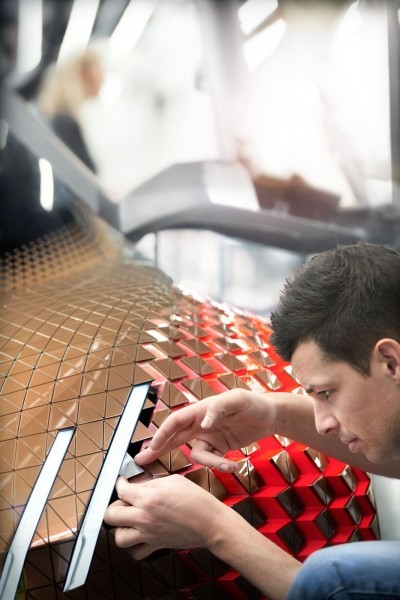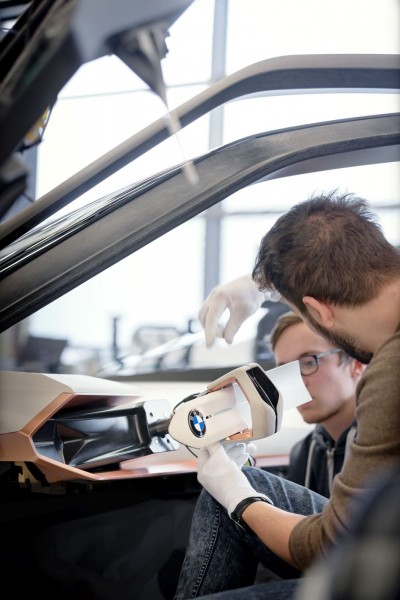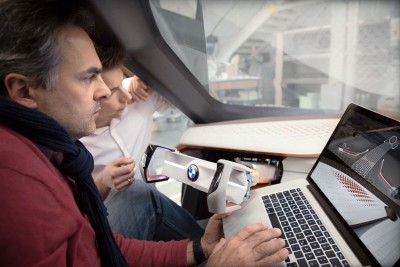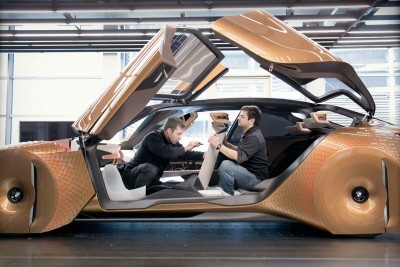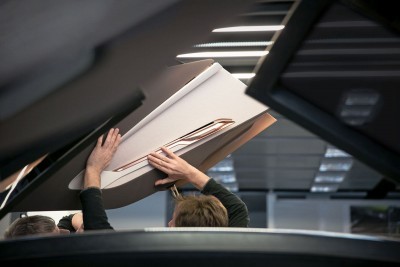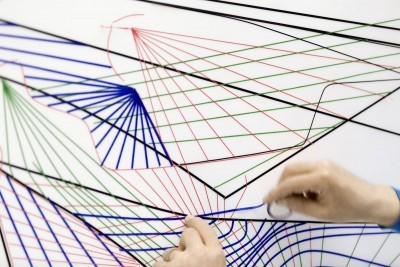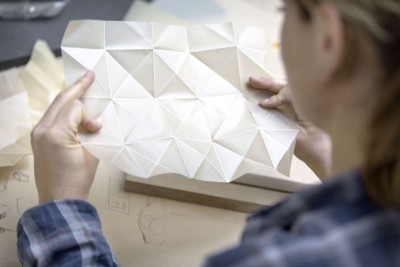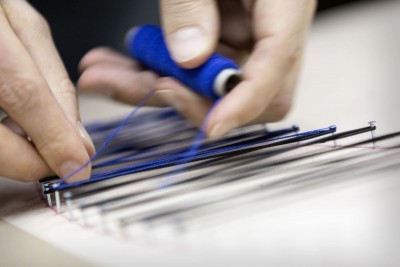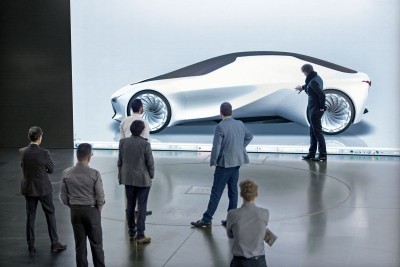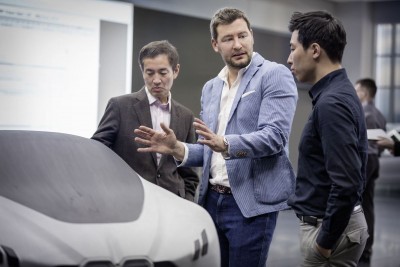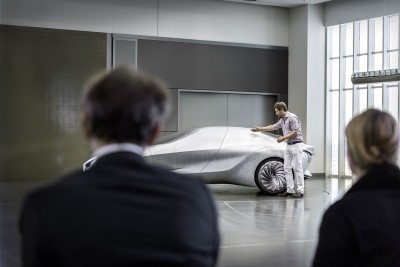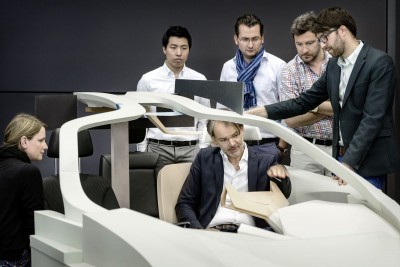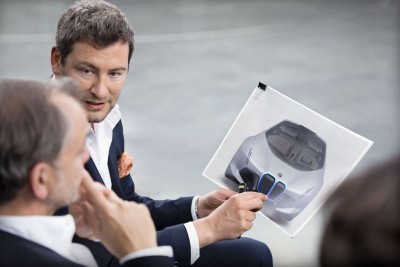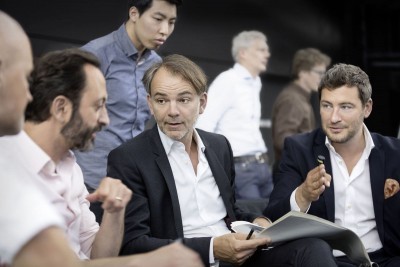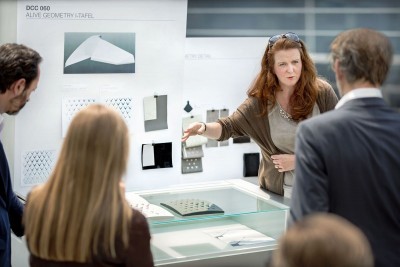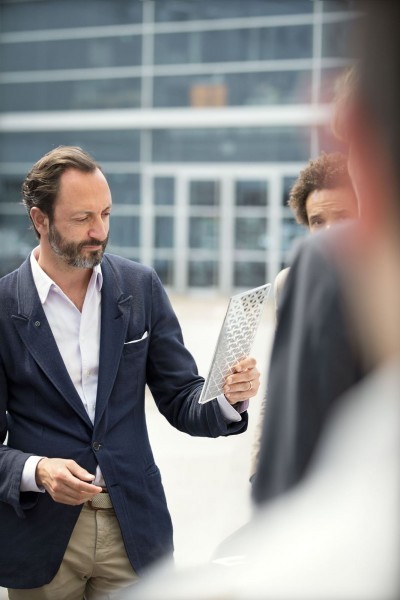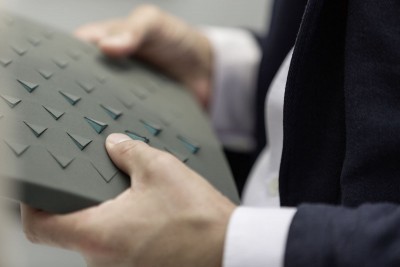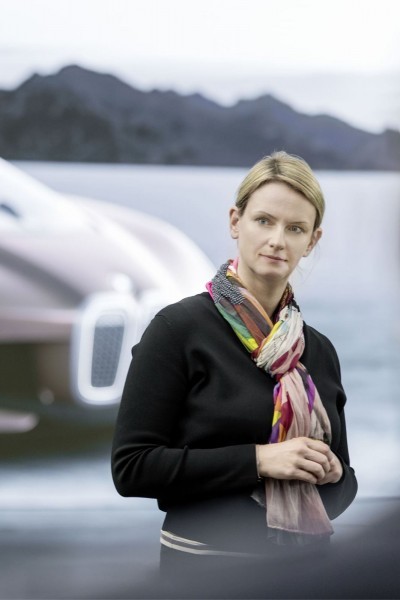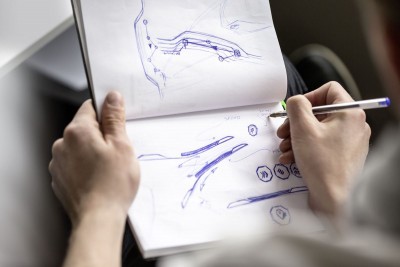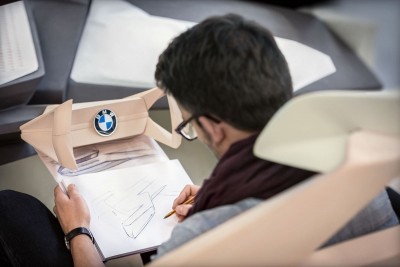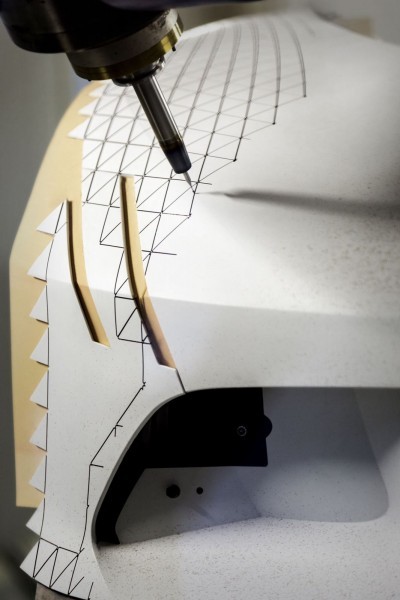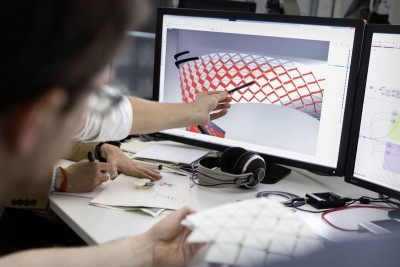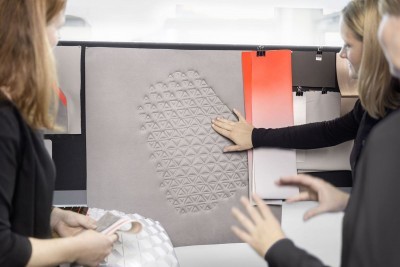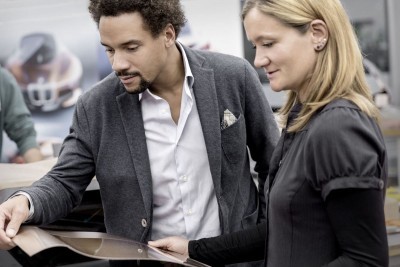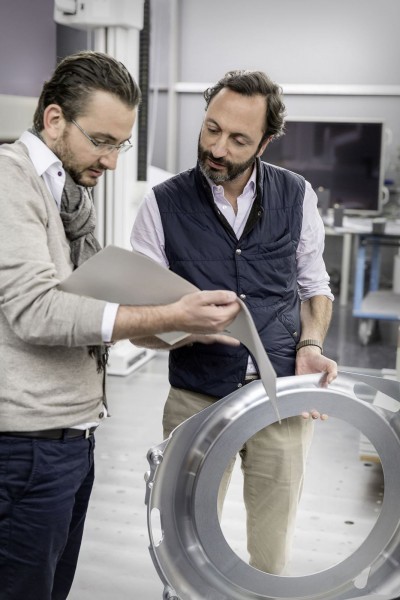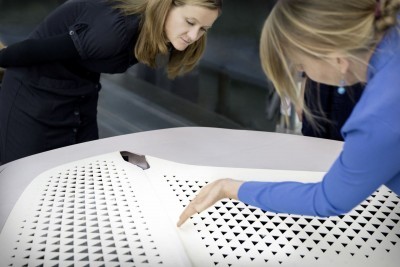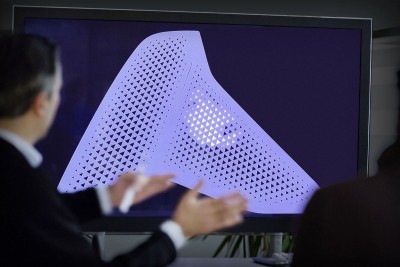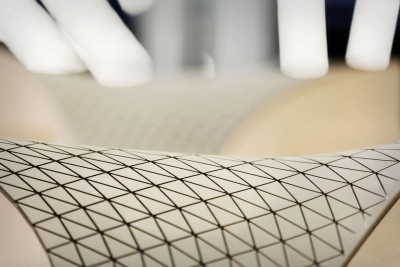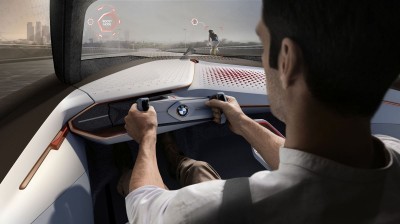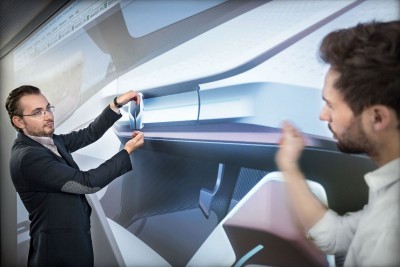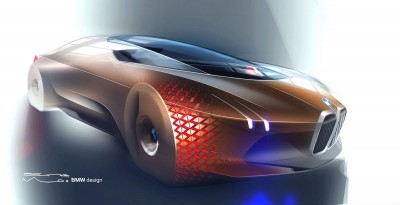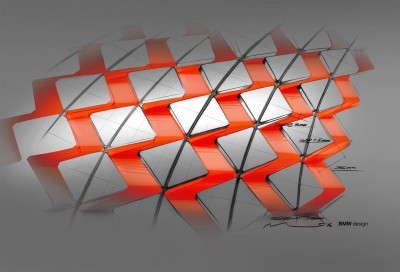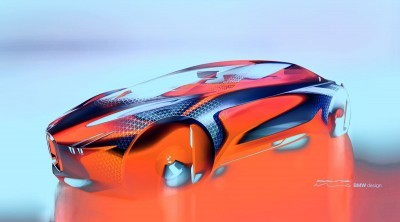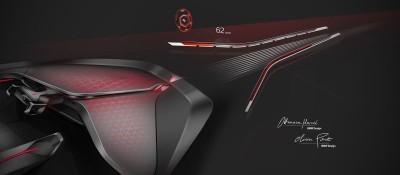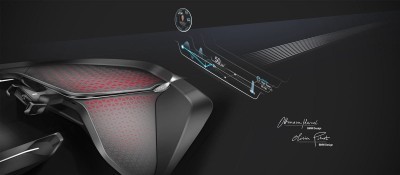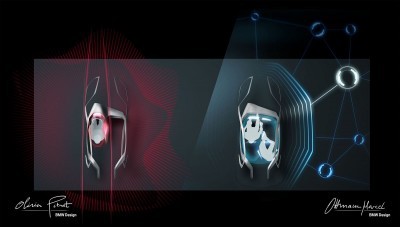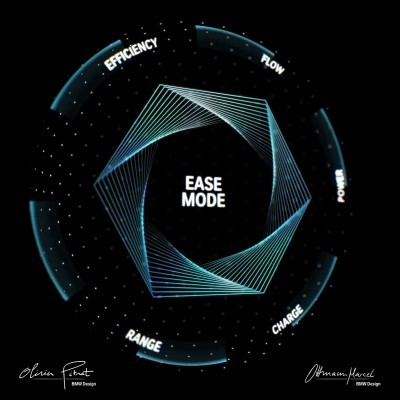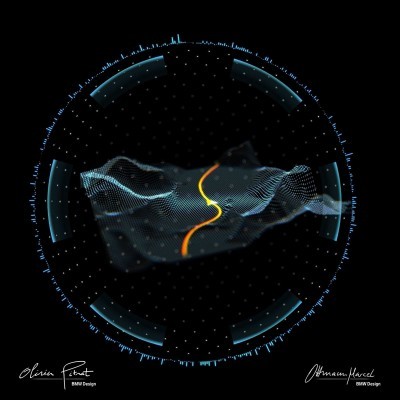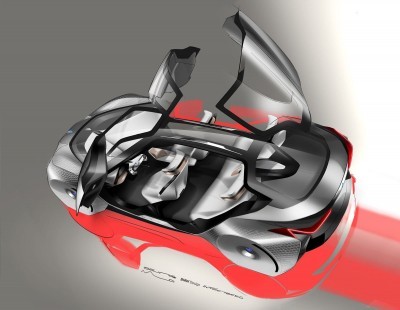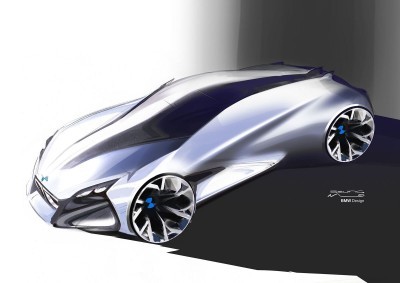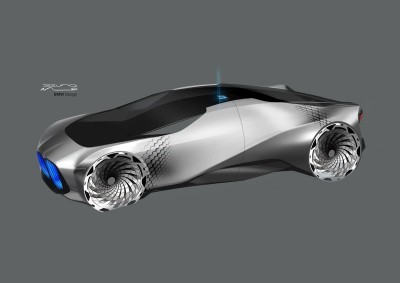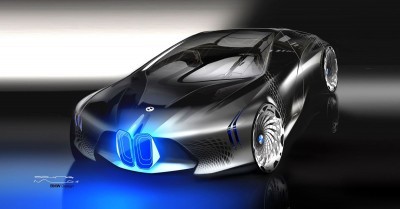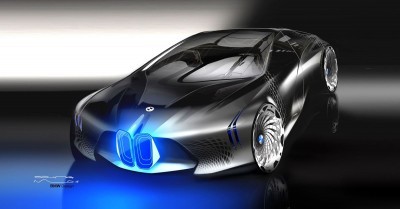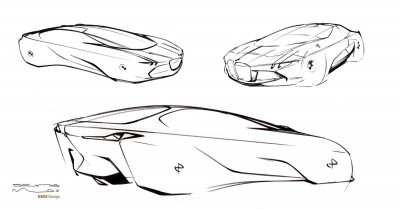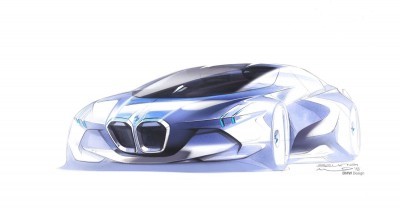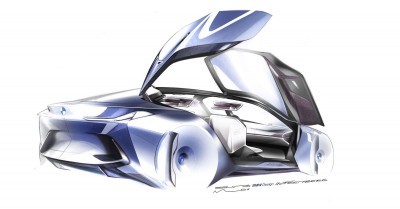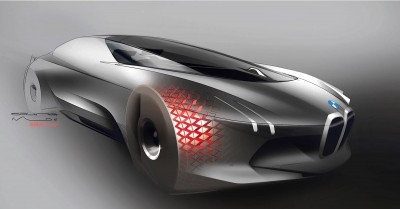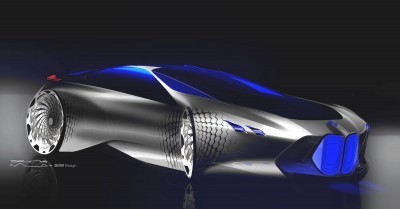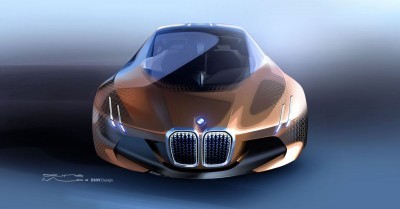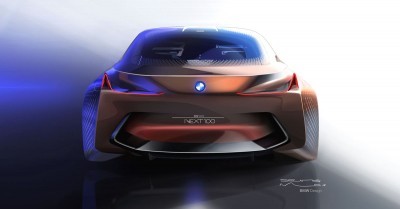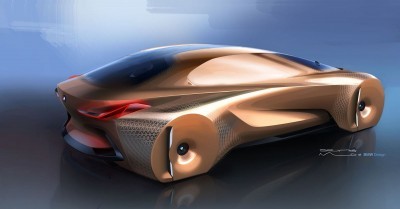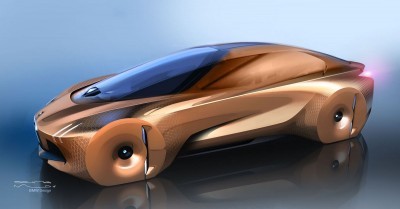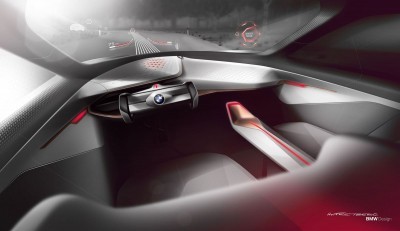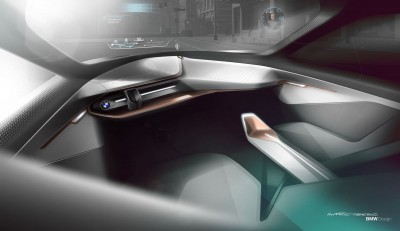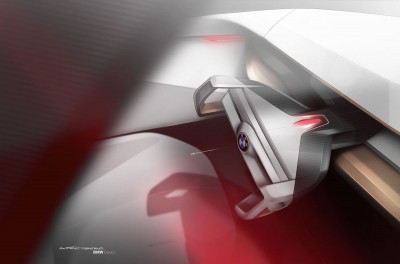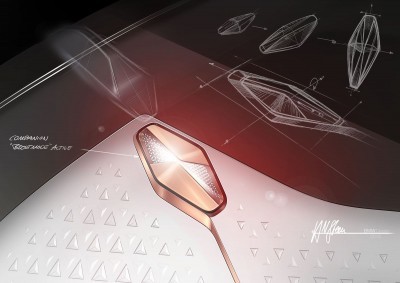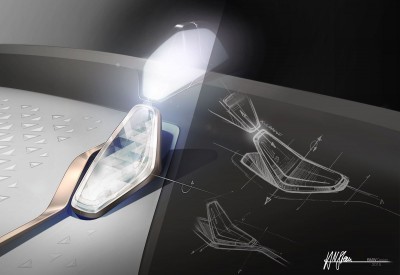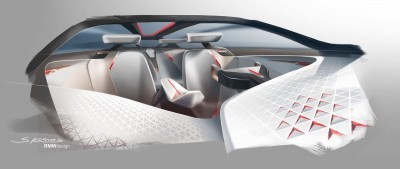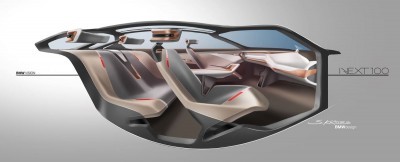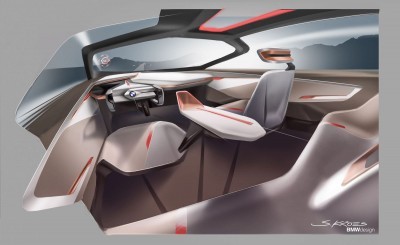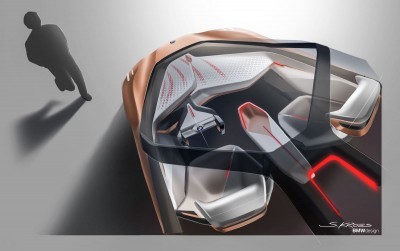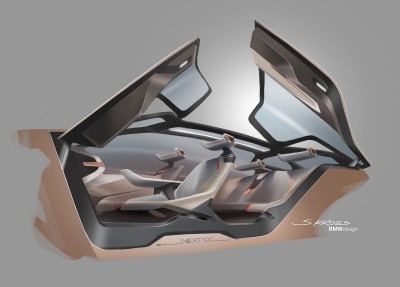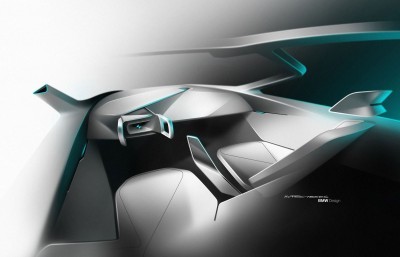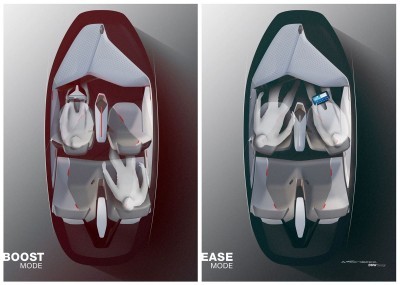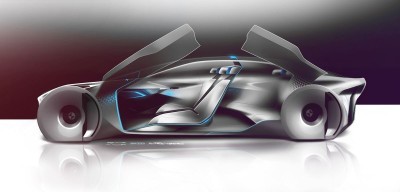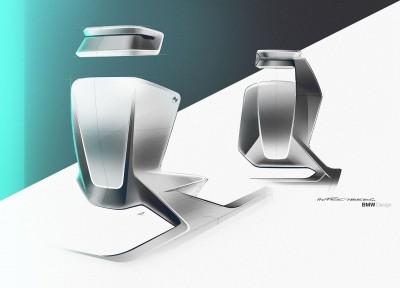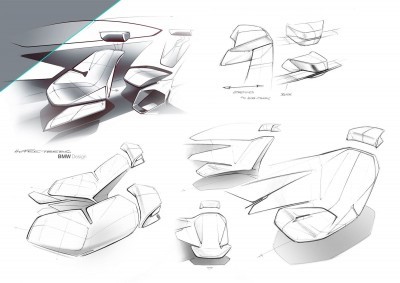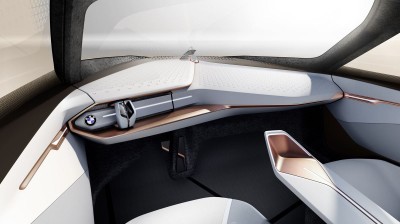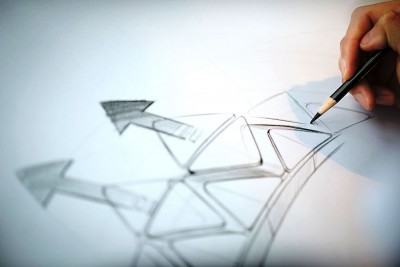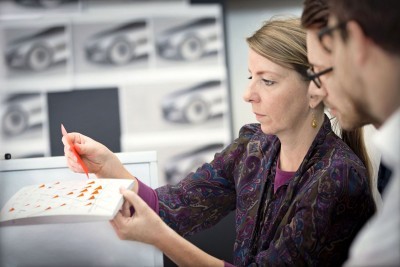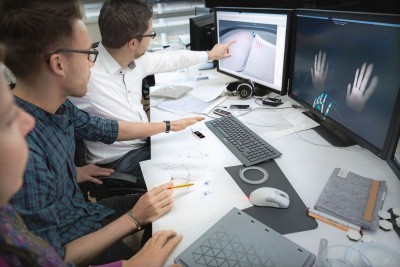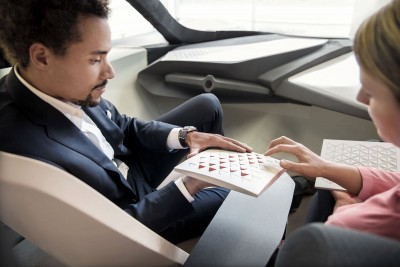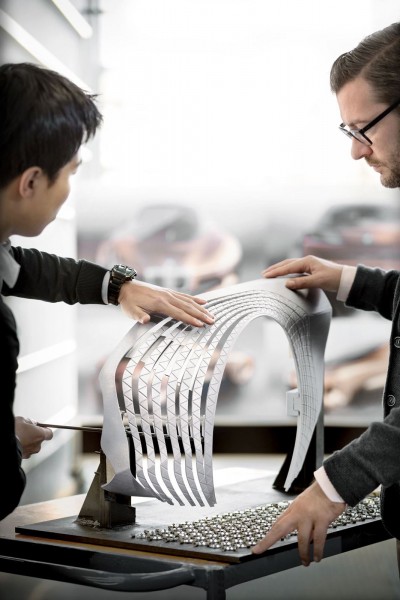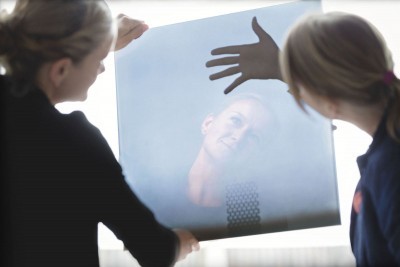Ready for 5000 German words you cannot possibly care about!?
Let’s dive in to the BMW Next 100 Years press conference and new-concept debut, while stripping out 95-percent of the unintelligible corporate babble below.
First things first: BMW Group and BMW pressclub have new websites. Yay!
But they do not work as easily as the previous ones. Boo. At least the zip files do not create unmoveable, undeletable 3GB desktop bombs like BMW USA PressClub’s. The renderings do turn from brown to pink when saved on a PC tho. Bonus — some fails live on!
Dear BMW. Flatten your renders and save JPG in RGB, not CMYK. Also, please show the poor overworked flunky in New Jersey how to zip files properly.
Second: we have an outline of another round of Vision Next concept cars from Rolls-Royce and MINI to debut in June in London.
Then a BMW Motorrad Vision concept confirmed for a LA debut on October 11th, 2016.
2016 BMW Vision Next 100 Concept
This concept is obviously the star of the day. Certainly versus the hundreds of photos BMW shared of the insular, convoluted design process that led up to this car’s details.
Basically, this car is a self-driving EV that is focused on driver well-being and advanced digital autonomy.
But it is the core proportions where BMW has totally abandoned its past, and is much worse for it.
Imagine a BMW Prius.
It would have a freaky face, deeply sloped windshield, cab-forward design with ultra short hood, and nerdy hatchback on its high tail.
BMW nails 75% of these poorly-envisioned goals in the Next 100 Concept.
What the f***? If this is the future of BMW……………… Count me out.
Beyond the deeply troubling proportions, there are other major taste failures. The hideous color, vertical grilles and fantasy doors all cause forehead furrowing in the worst Teutonic way. This car is worrying.
There are advanced elements to the way the car operates as an EV. It communicates with other road users via active triangles of light beneath the clean panel forms. It also leveraged AR and HUD displays to keep the driver over-informed on the road.
Perhaps the only element of the BMW Next 100 Concept that speaks to previous BMW principles is the heavy shrouding around all four wheels. This is a theme we say clearly on the first few decades of BMW motorcycles. 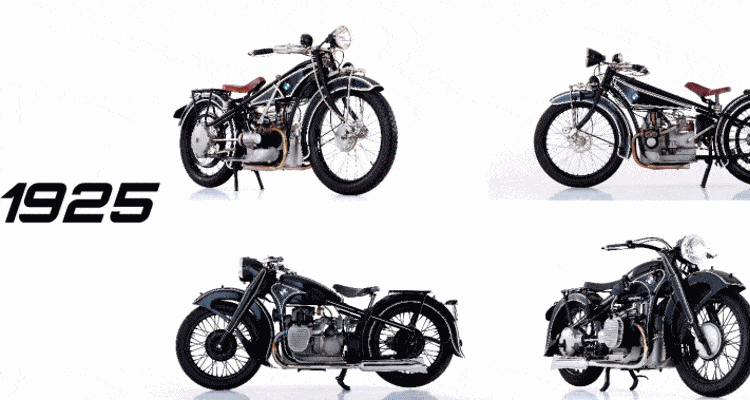
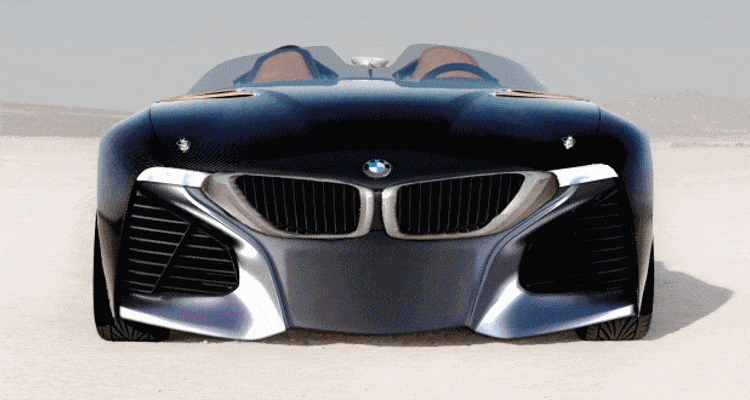
Wheel and tire shrouding it is the one missing-link in the wind tunnel. The one place where clear aero benefits can be achieved easily. But putting those innovations on the road is much trickier, from a functional and regulatory perspective. It basically means any flat tire — which BMWs on RunFlats seem to suffer far more than other cars — will require specialized equipment to remove the fender. Before you can even access the wheel to try and swap it on the road. Oh, wait. There is no spare tire in back — per weight savings mandates.
Again, two steps forward and five steps back.
This whole Next 100 concept is a D- in our design scorebook. Even while as ugly as the Mercedes IAA concept… the BMW version is such a knee-jerk eco fart that it makes one think that Harald Kruger can only see a few weeks in front of himself, let alone years into the future. BMW USA sales are tanking hard lately, too. Down eight percent in an up market for February 2016, for example.
Objectively, the Vision Next 100 Concept is a light preview of the 2018 BMW i5, a model sliding between the cool (but failing) BMW i8 and hideous (and failing HARD) BMW i3.
These cars are the victim of macroeconomics as much as their own hideous designs, confusing marketing (EV? Not EV?) and their unwanted tech innovations. (Keyfob needs charging weekly at minimum.)
We’re worried for the future of BMW Group if this is their gameplan.
Of course, people were up in arms about the X5. And we know how that turned out.
We’ve always loved the X5 though.
No love for the 2016 BMW Vision Next 100 Concept whatsoever.
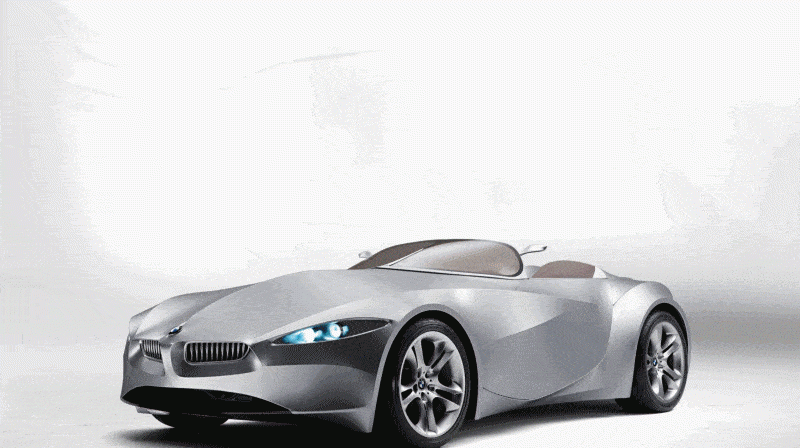
BMW VISION NEXT 100: A vehicle for future mobility.
- From driver to “Ultimate Driver” – through digital intelligence.
- “Alive Geometry” enables intuitive driver-vehicle interaction.
- “Boost” and “Ease” driving modes enable driver- or vehicle-controlled operation.
- “Companion”: The intelligent digital partner connects driver and car.
- Trademark BMW exterior.
- Materials of the future.
From driver to Ultimate Driver – through digital intelligence.
In the future, BMW drivers will still want to spend most of the time they are in their car at the wheel. In the BMW VISION NEXT 100, the driver will remain firmly in the focus, with constant connectivity, digital intelligence and state-of-the-art technologies available for support. But that’s not all: the BMW VISION NEXT 100 will turn the driver into the Ultimate Driver. So even though the world may well be changing, Sheer Driving Pleasure is here to stay – and will be more intense than ever before.
In designing the BMW VISION NEXT 100, the starting point was the interior. In the years ahead, the driver’s wellbeing will become increasingly important, and rather than merely feeling they are in a machine that drives itself, they should sense that they are sitting in one that was specifically designed for them. This idea gave rise to an architecture in which the cab seems particularly spacious compared with the overall size of the vehicle while retaining the typical exterior lines of a BMW. Despite its domed interior, the BMW VISION NEXT 100 retains the instantly recognisable athletic silhouette of a BMW saloon.
The design of the interior permits various modes of operation: Boost mode, in which the driver is at the controls, and Ease mode, in which the driver can sit back and let the vehicle take over. In Ease, the vehicle becomes a place of retreat with plenty of space, agreeable lighting and a comfortable atmosphere. In Boost, the driver takes over and benefits from the subtle and intuitive support offered by the vehicle. All the time, the vehicle is learning more and more about the person at the wheel, thanks to its sensory and digital intelligence, which the BMW Group calls the Companion. The Companion progressively learns to offer the right kind of support to transform the driver into the Ultimate Driver.
A very important element of the Vision Vehicle is another innovation known as Alive Geometry, the likes of which have never before been seen in a car. It consists of a kind of three-dimensional sculpture that works both inside and outside the vehicle.
2016 BMW Vision Next 100 Concept
Alive Geometry enables driver-vehicle interaction.
Alive Geometry consists of almost 800 moving triangles which are set into the instrument panel and into certain areas of the side panels. They work in three dimensions, communicating very directly with the driver through their movements, which are more like gestures than two-dimensional depictions on a display. Even the slightest peripheral movement is perceptible to the driver. In combination with the Head-Up display, Alive Geometry uniquely fuses the analogue with the digital.
The triangles work in much the same way as a flock of birds in controlled flight, their coordinated movements acting as signals that are easily comprehensible to those inside the car. Combined with the Head-Up display, they involve the driver in a form of preconscious communication, where an intuitive signal predicts an imminent real-time event.
Various approaches can already be seen today that appear to confirm the feasibility of this solution. Rapid prototyping and rapid manufacturing, for example, are gaining importance all the time and are likely to be commonplace 30 years from now. Although at present it remains difficult to imagine how hundreds of tiny triangles could be coordinated to make Alive Geometry work, in the years ahead, it will be possible, as today’s standard vehicle manufacturing methods are replaced. In the future it will become feasible to produce far more complex and flexible forms. This is why, in the context of the BMW VISION NEXT 100, the BMW Group refers to 4D printing, a process which adds a fourth level to components: the functional one. In the years ahead, printed parts manufactured in this way will directly integrate functions which today have to be designed and produced separately before being incorporated into the whole.
At the moment, the digital world is strongly linked to displays; the next step will be organic LEDs – in other words, displays that can freely change shape. However the Vision Vehicle suggests there will at some point be no more displays at all. Instead the entire windscreen will serve as a giant display, directly in front of the driver. In the future the digital and physical worlds will merge considerably, as is also expressed through Alive Geometry, for example, in the way the analogue dashboard interacts with the digital Head-Up Display in the front windscreen.
Boost and Ease driving modes for driver- or vehicle-controlled operations.
In Boost and Ease mode alike, the elements and technologies of the vehicle make for the most intense or relaxed driving experience, depending on what is required. Transitioning between modes is impressive and perfectly orchestrated, and Alive Geometry remains relevant throughout. In Boost, when the driver is concentrating fully on the road, Alive Geometry highlights the ideal driving line or possible turning point and warns of oncoming vehicles. Rather than making the driver drive faster, this kind of support sets out to make them drive noticeably better. In addition, intuitive feedback has a more physical and immediate impact than a robotic voice or instructions on a screen. In Ease mode, on the other hand, Alive Geometry is more discreet in its movements, informing occupants about the road ahead and any acceleration and braking manoeuvres that are about to happen.
In Boost mode, the entire vehicle focuses on the driver, offering intelligent support to maximise the driving experience. The seat and steering wheel change position, and the centre console moves to become more strongly oriented toward the driver. As the journey proceeds, the driver can interact with the vehicle via gesture control.
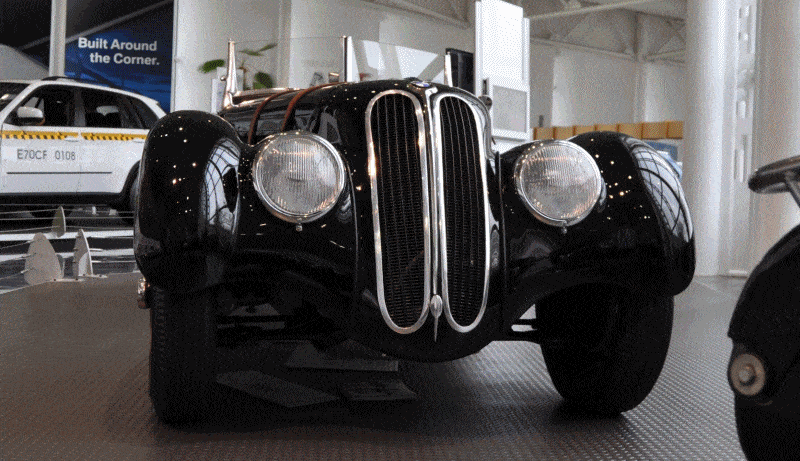
The contact analogue BMW Head-Up Display of the future uses the entire windscreen to communicate with the driver. In Boost mode, it focuses exclusively on what really matters to the driver: information such as the ideal line, turning point and speed. In addition, full connectivity, intelligent sensors and permanent data exchange allow the Head-Up Display to generate a digital image of the vehicle’s surroundings. In foggy conditions, for example, this means the driver can benefit from information such as vehicles crossing ahead, before they actually come into sight. In addition, by learning more and more about the driver, the system continuously improves, concentrating on creating at all times the most intense and personal driving experience possible.
The transition to Ease mode brings about a complete change of interior ambience. The steering wheel and centre console retract and the headrests move to one side to create a relaxed and welcoming atmosphere. The seats and door panels merge to form a single unit, allowing the driver and passengers to sit at a slight angle. This makes it easier for them to face each other and sit in a more relaxed position for easier communications. Meanwhile, the Head-Up Display offers occupants personalised content along with the information and entertainment they desire.
Depending on the driving mode, the focus of the vehicle changes, concentrating on essentials for the driver in Boost mode, and the surroundings and atmosphere in Ease mode, highlighting the impressive landscapes or buildings of interest that the car is passing by, for instance.
Whether the vehicle is in Boost or Ease mode is also clearly apparent to other road users as the trademark kidney grille, double headlights and L-shaped rear lights act as communication tool. Their different colours of light indicate which mode the vehicle is currently in.
Companion: The intelligent digital partner connects driver and car.
The Companion is symbolised by a small sculptural element which represents the driver-vehicle connection. Shaped like a large, cut gemstone, it is positioned in the centre of the dashboard, just beneath the windscreen, where it symbolises the intelligence, connectivity and availability of the BMW VISION NEXT 100. It also represents the constant exchange of data: the more it learns about the owner and their mobility habits, the smarter it becomes. At some stage it knows the driver well enough to automatically perform routine tasks for them and offer suitable advice when needed. Irrespective of the vehicle itself, constant learning makes the Companion increasingly valuable to its owner.
The Companion also plays an important role in driver-vehicle communications when the car transitions from Boost to Ease mode. While the driver concentrates on the road in Boost mode, the Companion remains flat in the dashboard. But when the BMW VISION NEXT 100 takes control in Ease, it rises up to create an interface with the windscreen. A signal light tells the driver that the car is ready for fully autonomous driving. For other road users, the Companion has a similar function, signalling through its own light as well as that of the vehicle that the car is operating in automated mode. In certain traffic situations, the Companion is in visual contact with other road users, helping pedestrians to cross the road by means of the green light gradient on the front of the vehicle.
Trademark BMW exterior.
The design of the BMW Vision Vehicle is characterised by a blend of coupé-type sportiness and the dynamic elegance of a sedan. At 4.90 meters long and 1.37 meters high, it has compact exterior dimensions. Inside, however, it has the dimensions of a luxury BMW sedan.
The large wheels are positioned at the outer edges of the body, giving the vehicle the dynamic stance that is a trademark of BMW. When it comes to aerodynamics, exterior Alive Geometry contributes to an outstanding effect: when the wheels swivel as the vehicle is steered, the bodywork keeps them covered as if it were a flexible skin, accommodating their various positions. The innovative design of the BMW VISION NEXT 100 gives it an extremely low drag coefficient of 0.18.
The exterior of the vehicle is copper in colour, designed to underscore the idea that BMW vehicles of the future should appear technical yet still have a warmth about them – as symbolised by the close links between the vehicle and its driver.
This relationship begins as soon as the driver approaches the vehicle: intelligent sensor technologies automatically open its wing doors. To give the driver more space to enter and exit, the steering wheel is flush with the dashboard. Once seated, the full range of systems is activated by tapping on the BMW logo in the middle of the dashboard. The door closes, the steering wheel comes forward, and the driving experience begins.
Materials of the future.
The designers of the BMW VISION NEXT 100 primarily used fabrics made from recycled or renewable materials. The visible and non-visible carbon components, such as the side panels, are made from residues from normal carbon fibre production. In the future, the choice of materials will become even more important throughout the design and production process.
With time, other new materials will also be added into the mix, allowing different vehicle shapes to emerge. To save resources and support more sustainable manufacturing, less use will be made of wood and leather while innovative materials and the consequent new possibilities in design and production gradually come to the fore. This approach is already being exemplified by the use of high-quality textiles and easily recyclable mono-materials and the elimination of leather in the interior of the BMW VISION NEXT 100.
1. Pioneering moments and milestones in the history of the BMW Group.
Pioneering decisions and products from the past continue to make their mark on the BMW Group today.
The BMW Group has had a significant influence on the future of mobility ever since it was founded in 1916. Over the years, it has constantly evolved, rising to its position today as a premium provider of mobility services. The capacity for foresighted action is a part of the BMW Group’s DNA – as evidenced at many points throughout its history and by numerous decisions and products.
Some pioneering moments in the history of the company:
Introduction of the BMW R 32 – a major influence across the industry.
Launched in 1923, the R 32 was far more than just the first bike to sport the blue and white brand logo on its tank; it was evidence, even then, of the company’s courage in departing from familiar pathways to engineer its very first vehicle, coming up with a design developed completely around the engine. This approach would become not only a trademark of BMW motorcycle construction but also a major influence across the industry as a whole.
“Born Electric” Launch of BMW i – another milestone showing the power to completely rethink and redesign mobility.
Coupled with the power to rethink and redesign mobility from its very foundations, this courage remained clearly in evidence 90 years later: in 2013, the Born Electric motto marked the market launch of the all-electric BMW i3 – and with it the start of a new era. Based on an architecture comprising a lightweight carbon passenger cell on an aluminium chassis, the BMW i3 was a complete departure from all that had gone before. Instead, it set out to meet the specific requirements of electro-mobility.
Presentation of the BMW 328 embodying dynamics, aesthetics and sheer innovation – qualities the BMW brand stands for to this day.
At the Nürburgring in June 1936, the first public display of the BMW 328 was to define the young brand’s motorsport ambitions right up to the 1960s. The success of the BMW 328 lay in the sum of its engineering parameters: rigorously applied lightweight design, ideal weight distribution, aerodynamic lines, the perfect engine, and flawless road-holding thanks to a meticulously tuned chassis. The BMW 328 laid the foundation for an entirely new understanding of what a car could be: success through performance based on the perfect interplay between maximum efficiency and the full spectrum of parameters. By incorporating these qualities, the BMW 328 embodied everything the BMW brand stands for to this day: dynamics, aesthetics and sheer innovation.
BMW 1500 – the founding member of the “Neue Klasse” – a new segment, the family sport saloon.
Over the years, the BMW Group has proven time and again its instinct for creating the right cars and motorcycles at the right time. Many of its products have even established entirely new vehicle segments: in the early 60s, for example, the “Neue Klasse” (“New Class”) BMW 1500 became the founding member of the family sport saloon segment. Today, this segment is served by every premium manufacturer.
An entirely new bike concept – the “GS”– was born with the R 80 G/S.
In the late 1970s, when competition from the Far East was increasing, motorcycle developers at BMW came up with a surprise in the shape of an entirely new bike concept, launched in 1980: the R 80 G/S. At the time, it was the first and only large-engined off-roader to offer the ride qualities of a road bike. The “GS” went on to lay the foundation for one of the most popular motorcycle types today: the travel enduro.
Unveiling of the first “SAV”: the BMW X5.
The innovative concept to combine on and off-road capabilities turned out to be highly promising – and not just for bikes. Back in 1999, the automotive world still distinguished between passenger vehicles for the road and off-roaders for rough terrain. BMW, however, came up with a surprising new solution that combined both. It was unveiled at the Detroit Motor Show in January 1999. Long before the SUV boom began, the BMW Group had developed its own interpretation of a vehicle that offered dynamic handling and all-wheel drive as well as elevated seating positions for occupants. The name SAV (Sports Activity Vehicle) expressed its sporty focus: it was the BMW X5, manufactured at the US plant in Spartanburg.
Establishment of BMW Motorsport GmbH – foundation for the BMW M GmbH.
It is not only products that have brought the BMW Group such success; so, too, have its pioneering decisions. One such decision concerned the establishment in 1972 of BMW Motorsport GmbH. For the company’s top decision-makers, the fact that motorsport contributed to the positive image of the company and its products was not enough; the vehicles the Motorsport unit produced should also generate significant returns with which to refinance motorsport activities. To this day, products by BMW M GmbH remain a major contributor not only to the company’s results but also to its image.
Opening of the “FIZ” – BMW Group’s Research & Development Centre in Munich.
Many of the BMW Group’s innovations are created in the highly progressive environment of the company’s Research & Development Centre in Munich, known as the FIZ. Opened in 1990, the building has a honeycomb structure that enhances collaboration between all the departments involved in vehicle development by reducing the distances between them. Along with a new building, the engineers were newly organised into “development project teams”, which enabled them to communicate more efficiently and resolve issues directly on their first prototypes. In addition, they could maintain constant contact with the designers, as they were also based in the FIZ and were available to discuss their proposals right from the start. Concentrating development work in the FIZ has proven highly successful over the years and continues to evolve to this day. The facility’s Aerodynamics Test Centre for example, first went into operation in 2009 and is now considered a benchmark around the world. Plans are already under way to continuously extend the FIZ over the coming decades.
BMW Group: Facing up to the past.
As well as its many successes, the BMW Group has faced several major crises and challenges during its history.
1930s and 1940s.
Under the National Socialist regime of the 1930s and 40s, BMW AG operated exclusively as a supplier to the German arms industry. As demand for BMW aero engines increased, forced labourers, convicts and prisoners from concentration camps were recruited to assist with manufacturing them. To this day, the enormous suffering this caused and the fate of many forced labourers remains a matter of the most profound regret. In 1983, BMW AG became the first industrial corporation to initiate a public debate about this chapter of its history with the publication of a book entitled “BMW – Eine Deutsche Geschichte” (“BMW – A German History”). Several more publications on the subject followed. The BMW Group is explicitly facing up to this dark chapter of its past and in 1999, it became a founding member of the foundation “Erinnerung, Verantwortung, Zukunft” (“Remembrance, Responsibility and Future”) for the compensation of former forced labourers.
Since the 1990s, the BMW Group has been actively engaging in efforts to promote openness, respect and understanding between cultures. (To find out more about Corporate and Intercultural Responsibility at the BMW Group, visit the PressClub at: www.bmwgroup.com/en/responsibility/corporate-citizenship/culture.html).
9 December 1959.
In the years after the war, BMW, or the Bavarian Motor Works, to give it its full name, was slow to recover. While 1950s Germany was in the midst of the “economic miracle”, BMW AG found itself in severe crisis and on the verge of losing its independence by being sold to rival Daimler-Benz. At a dramatic General Meeting on 9 December 1959, plans for the sale were scuppered, however, by small shareholders and BMW dealers. Impressed by the faith that shareholders and dealers placed in BMW, one of the company’s larger shareholders, industrialist Herbert Quandt, decided to find an alternative solution, which he worked on in discussions with the Management Board and Works Council. Detailed analyses showed that BMW had a promising future. The entrepreneurial commitment of Herbert Quandt and his family continues to secure the autonomy of BMW AG to this day.
The strength and resilience of the BMW Group were also apparent in later years. The oil crisis of the early 1970s and the unsuccessful acquisition of Rover in the 1990s were two challenging situations; the company emerged from both empowered.
Brands are the emotional character of the company.
Over the years, the BMW Group has demonstrated its acute brand awareness on many occasions. As well as developing the core BMW brand and realigning it after the crisis of 1959, it went on to establish the BMW Motorrad name. In 2001 and 2003 respectively, it also rekindled the success of the UK’s MINI and Rolls-Royce brands thanks in part to cutting-edge technology.
Since then, the continued enhancement of the BMW, BMW Motorrad, MINI and Rolls-Royce brands has allowed the BMW Group to secure a strong position in the premium segment. “The company has constantly developed and sometimes even reinvented itself,” says BMW AG Management Board Chairman, Harald Krüger. “As we move into the future, that’s not going to change.”
2. BMW Group THE NEXT 100 YEARS: The centenary year.
Centenary leitmotif and new BMW Group corporate identity.
The motto of the BMW Group’s centenary celebrations is THE NEXT 100 YEARS.
Throughout its history, the BMW Group has been a pioneering force with a clear focus on the future. This same approach will also be at the centre of its centenary activities, which first and foremost shine a light on what lies ahead.
This commitment to the future and to progress is clearly expressed in the new corporate identity and website. The corporate identity includes a new emblem, which consists of three interlinking triangles that combine to form an arrow. The four elements in the design represent the four key characteristics of the BMW Group: Responsibility, Trust, Pioneering Spirit and Success. They also reflect the diversity of the company, its brands and its employees.
The BMW Group website, www.bmwgroup.com, has been comprehensively updated, with new technical features and contents delivering the full range of the latest forward-looking online communications.
Centenary Event on 7 March 2016.
On 7 March 2016 – one hundred years to the day since BMW AG was entered into the commercial register – the BMW Group will launch its centenary activities.
On the morning of 7 March, the new BMW Group Classic building in Moosacher Straße 66 will open its doors for the very first time, welcoming international journalists to a press conference giving details about the centenary. Moosacher Straße 66 is a significant address as it is the place where the company first began.
In the afternoon of 7 March, around 2,000 guests from the world of business, politics, research, society and the media will be welcomed to the Munich Olympic Hall along with selected dealers, suppliers and associates. Here, a multimedia show will take them through the key moments in the BMW Group’s history and present the company’s interpretation of future premium mobility. The event will culminate in the unveiling of a Vision Vehicle created by the core brand, BMW: the BMW VISION NEXT 100.
Centenary Event: Streamed to associates around the world.
The BMW Group’s success would never have been possible without the commitment of its employees. As a global organisation, the Group employs more than 122,000 people at 140 locations around the world. Almost all of them will have the opportunity to come together to watch the show at the Munich Olympic Hall, when it is streamed live to their facility as part of their own local event. In addition, many markets around the world will be running their own events to mark the centenary. One very special experience will be the live broadcast to Munich’s Allianz Arena, where over 30,000 employees from the various sites and offices across the city will be watching the launch event as it unfolds. For BMW Group employees, one highlight will be the Associates’ Symbol. This will be revealed right at the start of the kick-off event and consists of a whole host of portrait photographs of employees from around the world, which were submitted in the run-up to the event.
BMW Group World Tour:
“Iconic Impulses. The BMW Group Future Experience”.
Following the Centenary Event on 7 March, the BMW Vision Vehicle will set off on a symbolic BMW Group World Tour, a travelling exhibition with stops in China, UK and USA.
For its Asian premiere, the BMW VISION NEXT 100 will travel to Beijing. Later it will move on to London, where two further Vision Vehicles will join it, this time from the BMW Group’s British-based brands, MINI and Rolls-Royce.
The last port of call on the World Tour will be Los Angeles, USA, one of the BMW Group’s key markets. Here, the final Vision Vehicle, from BMW Motorrad, will complete the quartet of BMW Group brands.
Inspiring future mobility is a key aspiration of the BMW Group. This is clearly illustrated by the concept and title “Iconic Impulses. The BMW Group Future Experience”. The exhibition presents the company’s holistic view of future individual mobility – a perspective that sees the BMW Group and its brands continuing to create positive, emotional and personal experiences for its customers to enjoy.
Visitors to the “Iconic Impulses. The BMW Group Future Experience” will experience the BMW Group as a thought leader presenting visions that reach far beyond the short term, offering a multi-faceted and inspiring perspective on the future of mobility.
The exhibition will cover various future trends which will have a significant influence not only on the automotive industry but on society as a whole. It will explore:
- The opportunities opened up through digitalisation and connectivity
- The increasing role of technology in our lives
- BMW Group’s vision of a sustainable future
- The company’s commitment to expand its efforts as a good coporate citizen
BMW Group World Tour dates:
- Beijing (5-15 May) – BMW VISION NEXT 100 makes its Asian debut
- London (16-26 June) – MINI and Rolls-Royce Vision Vehicles to be unveiled
- Los Angeles (11-16 October) – BMW Motorrad Vision Vehicle makes its world debut
To accompany the exhibition, the BMW Group will hold discussions for selected groups and stakeholders. The main aim will be to encourage an exchange between inspiring individuals from various fields outside the company and experts and talented individuals from within it. Together, they will debate and shape the development of various issues around future mobility.
Two exhibitions, one festival.
Future Experience in the ‘double cone’ at BMW Welt.
Core components of the BMW Group World Tour exhibition in Beijing, London and Los Angeles will also be on display in Munich, as a permanent installation for visitors to enjoy. The Future
3. The BMW Groups’s view of the future: Transformations and visions.
By selecting THE NEXT 100 YEARS as its leitmotif, the BMW Group consciously tackled a paradox: the next 100 years cannot be predicted – not by scientists, nor by politicians or economic strategists. However, a number of credible prognoses exist that are based on future projections for a variety of figures and factors. After a lengthy spell of research, the BMW Group has used them to generate its own vision of tomorrow’s world. The decision was made to concentrate on key questions and megatrends that will impact not only personal mobility but also our day-to-day and business lives. The BMW Group aims to present as holistic a view as possible of the next two to three decades, based on well-regarded studies from various sources as well as the opinions of renowned futurologists.
By combining its own internal information with evaluations from various research institutes, the BMW Group has created a comprehensive picture of the future and of social transformation and the human needs associated with it. The BMW Group firmly believes that personal mobility is and will remain a fundamental human need.
Burgeoning urbanisation, megacities, globalisation and metropolitan regions. Mobile versatility.
A key characteristic of the transformation that lies ahead is burgeoning urbanisation. Experts estimate that by 2050, more than 75 percent of people in Europe and almost 90 per cent of people in the US will live in cities. At the same time, the requirement for greater individuality will increase.
Already today, owning a vehicle is sometimes not enough to ensure our changing personal needs and mobility requirements are met. Overcrowded roads, a lack of parking spaces and vehicle bans for environmental reasons are just some of the barriers which need to be overcome in urban areas today. In July of last year, the BMW Group’s Centre of Excellence for Urban Mobility set out to resolve some of these issues, and its team of experts is now working with cities and all the relevant interest groups to develop sustainable concepts for future urban mobility.
People everywhere want to be able to have access to the right mobility solution for any given situation. Car-sharing programmes, such as DriveNow, have entered our cities as new concepts and are already working well. However, it’s only when all the various modes of transport work in concert that people’s needs will genuinely be met. Changing between different transport options can be time-consuming and highly inconvenient. The multi-modal routing system that debuted in the BMW i3 includes public transport in its recommendations wherever this makes travelling more convenient. Automatic booking and standardised payment systems already offer partial solutions today but have yet to become more closely integrated.
At the same time, people are seeking a higher-quality transport experience. As time becomes increasingly scarce, the period spent getting from A to B will become more and more important; people will want to use their journey time efficiently and safely, for work or to relax, to enjoy new experiences or the company of their companions. That’s why BMW Group Mobility thinks well beyond the product, extending its reach to include technologies and services for enhanced individual mobility. The BMW Group’s future vision is for mobility to become effortless, available on demand and individually customisable. In the years and decades ahead, the BMW Group would like to keep people moving by the best means possible.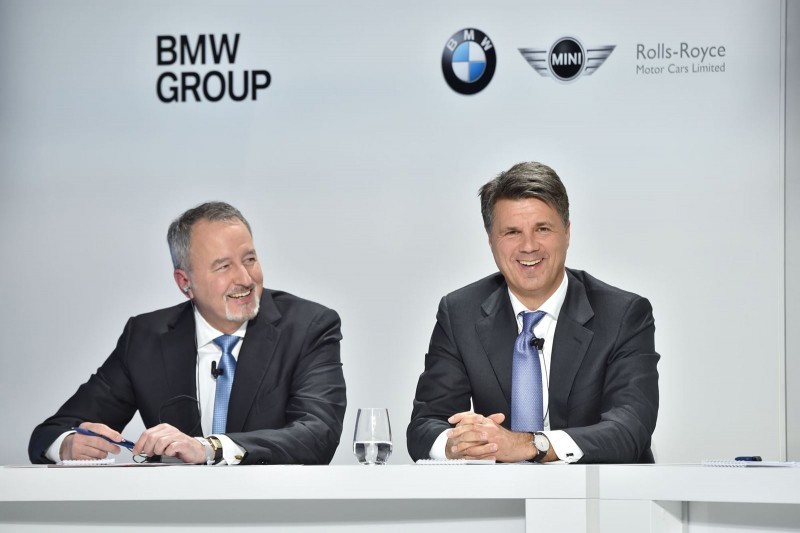


Tom Burkart is the founder and managing editor of Car-Revs-Daily.com, an innovative and rapidly-expanding automotive news magazine.
He holds a Journalism JBA degree from the University of Wisconsin – Madison. Tom currently resides in Charleston, South Carolina with his two amazing dogs, Drake and Tank.
Mr. Burkart is available for all questions and concerns by email Tom(at)car-revs-daily.com.

